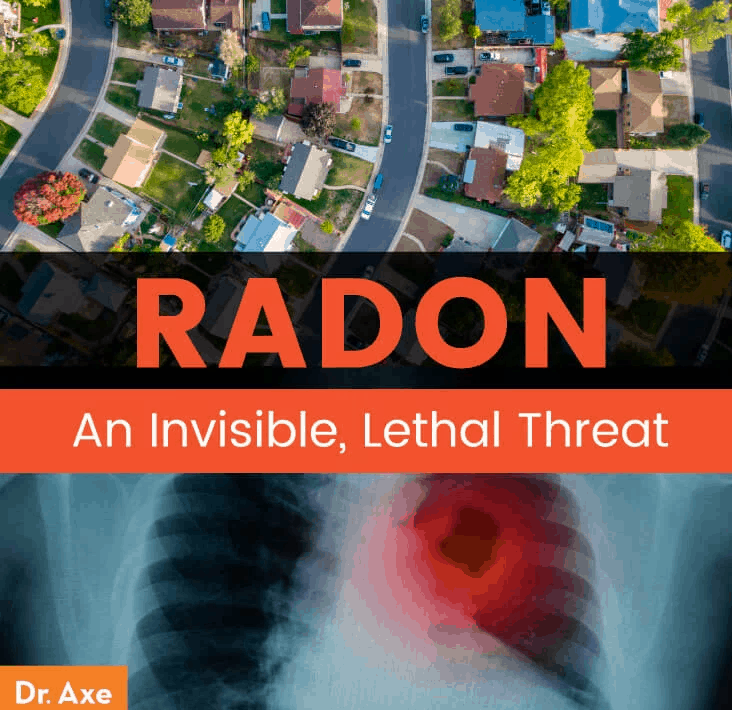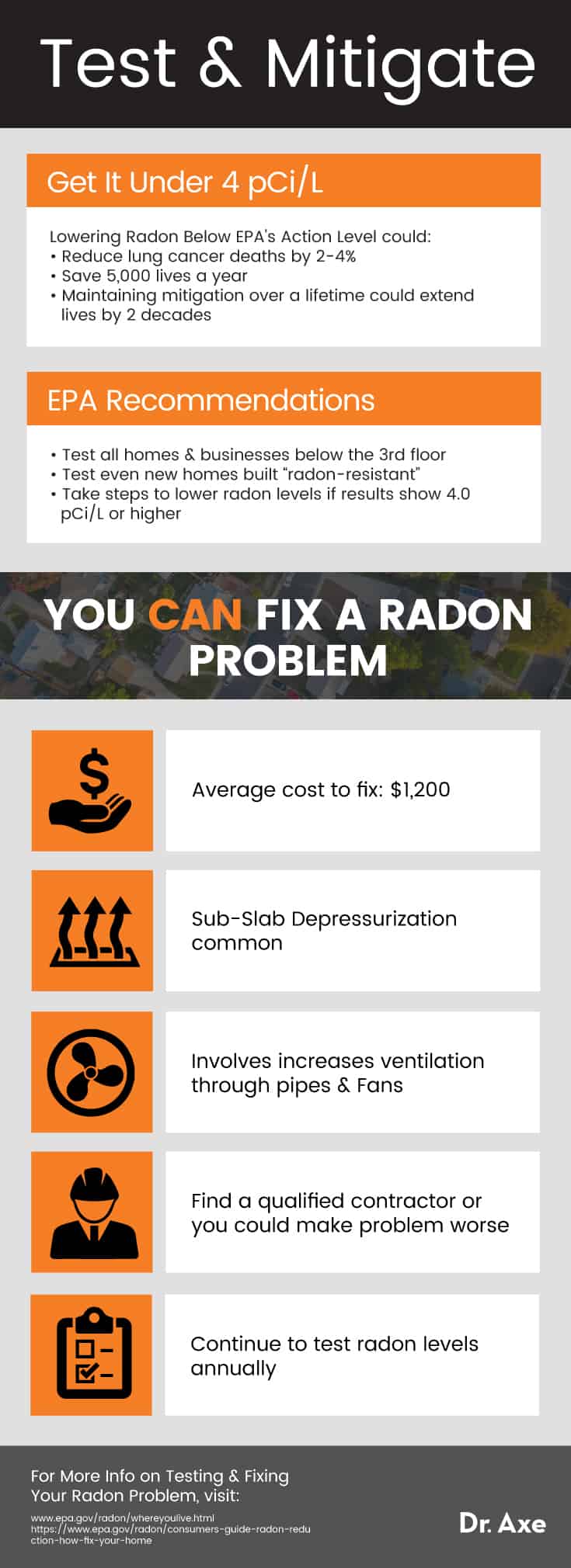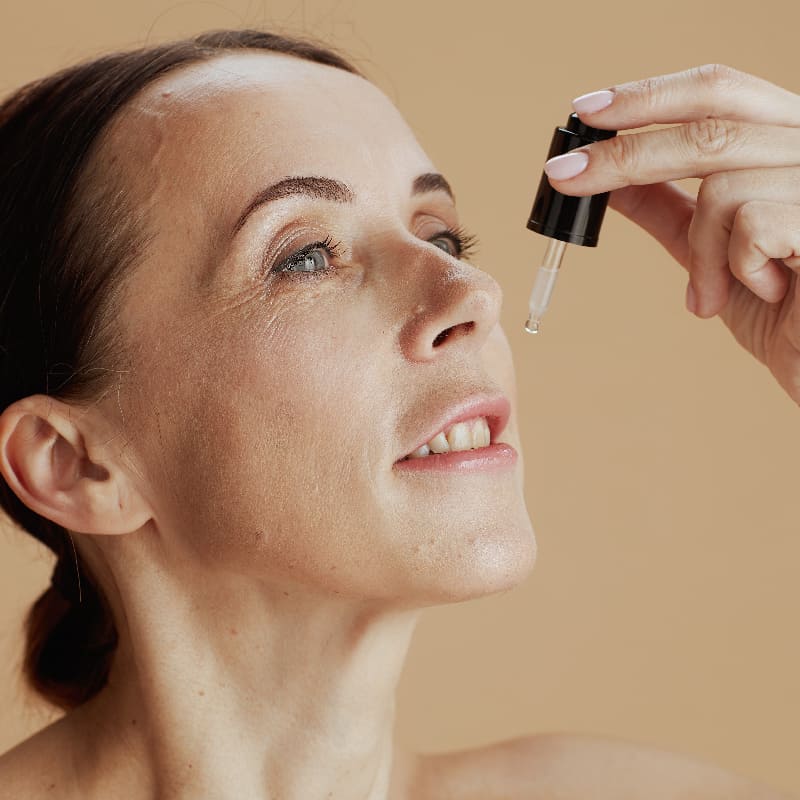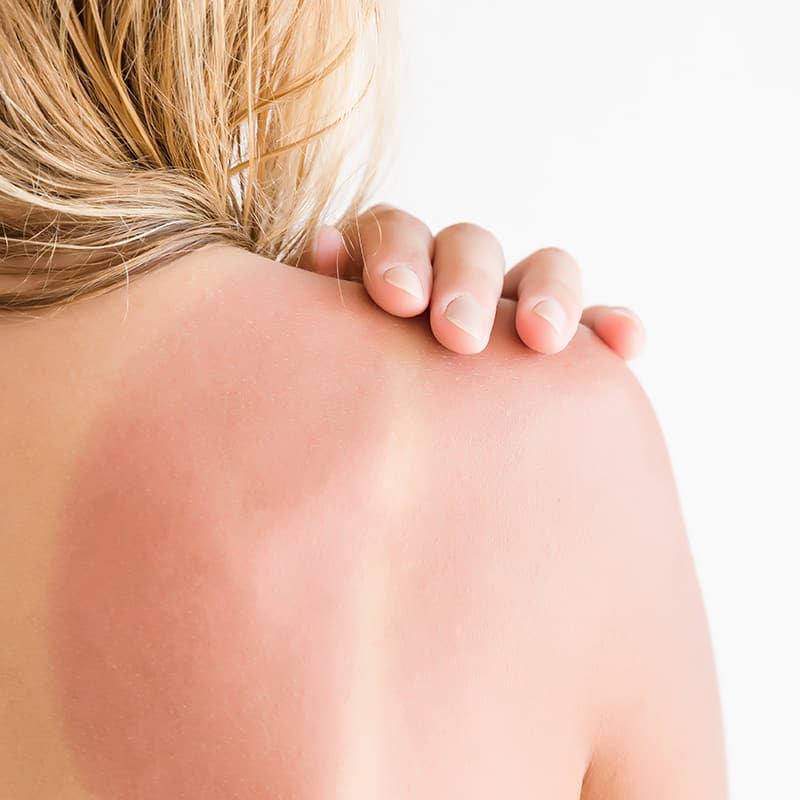This Dr. Axe content is medically reviewed or fact checked to ensure factually accurate information.
With strict editorial sourcing guidelines, we only link to academic research institutions, reputable media sites and, when research is available, medically peer-reviewed studies. Note that the numbers in parentheses (1, 2, etc.) are clickable links to these studies.
The information in our articles is NOT intended to replace a one-on-one relationship with a qualified health care professional and is not intended as medical advice.
This article is based on scientific evidence, written by experts and fact checked by our trained editorial staff. Note that the numbers in parentheses (1, 2, etc.) are clickable links to medically peer-reviewed studies.
Our team includes licensed nutritionists and dietitians, certified health education specialists, as well as certified strength and conditioning specialists, personal trainers and corrective exercise specialists. Our team aims to be not only thorough with its research, but also objective and unbiased.
The information in our articles is NOT intended to replace a one-on-one relationship with a qualified health care professional and is not intended as medical advice.
Radon Symptoms: Is This Deadly Gas Lurking in Your Home?
March 13, 2017

Did you know that breathing radon for prolonged periods can present a significant health risk to you and your family? According to the Surgeon General’s National Health Advisory, millions of homes have an elevated radon level and more than 20,000 Americans die of radon-related lung cancer every year. (1) And what’s really scary is that there are no obvious radon symptoms. You would never know that you have elevated radon levels in your home unless you tested for it.
You can’t see, taste or smell radon, so testing your home and workplace is the only way to be sure of your level of exposure. And don’t be fooled that radon only affects certain kinds of home — it can actually be a problem in homes of all kinds, whether they are new homes, “radon-resistant homes,” old homes, drafty homes, homes with basements or homes without basements. If you find out that radon is a threat in your home, you can reduce the levels using well-established venting techniques and try detoxing your body in an effort to keep your lungs as healthy as possible despite any damage done by radon exposure.
Thankfully, a professionally installed radon mitigation system can lower your exposure by more than 90 percent and add decades to your life. A system with these life-saving perks typically costs an average of just $1,200 in a home. (1, 2) I’d say it’s an investment well worth it if radon is a problem in your home.
What Is Radon?
So where does radon come from. And what is it, exactly? Radon is a naturally occurring radioactive gas that comes from the natural decay of uranium that is found in nearly all soils and rocks. Most of the time, it’s emitted into the home from the soil through cracks. But it can also enter the home through well water and from building materials. Typically, it moves up through the ground into the air, and then into your home through cracks and other holes in the foundation. When it becomes trapped in the home, it begins to build up and negatively effect the health of the people living there. Radon is invisible, odorless and tasteless — and it doesn’t cause immediate health symptoms — so there’s no way to know if you are at risk of radon exposure.
Not only are elevated radon levels found in homes, they are also a problem in schools, childcare facilities and workplaces. According to a citizen’s guide published by the United States Environmental Protection Agency, radon gets into your home or any other building through (3):
- Cracks in solid floors
- Cracks in the walls
- Construction joints
- Gaps in suspended floors
- Gaps around service pipes and wires
- Cavities inside walls
- The water supply
Radon Health Effects
Lung Cancer
Radon is one of the leading causes of lung cancer, along with smoking and secondhand smoke. It’s blamed for up 14 percent of lung cancer cases worldwide. Radon exposure is responsible for about 21,000 lung cancer deaths every year, and about 2,900 of those deaths occur among people who have never smoked. For smokers, the risk of lung cancer is significantly higher due to the synergistic effects of radon and smoking. A non-smoker (who has never smoked) who is exposed to 1.3 picoCuries per liter of air (the average amount of radon in U.S homes) has a 2 in 1,000 chance of dying lung cancer, while the chances among smokers is 20 in 1,000. (4)

Here’s how radon effects your lungs — radon gas decays into radioactive particles that can get trapped in your lungs when you breathe. As the particles break down further, they release small bursts of energy that can damage lung tissue to lead to lung cancer over the course of your lifetime. (5)
The most compelling evidence of radon health effects originally came from studies involving underground miners, particularly uranium miners who were exposed to radon in the mid-20th Century. The results consistently demonstrated increased risk of lung cancer with increasing exposure to radon in the working environment. (6)
Since then, numerous studies have established the carcinogenic potential of radon. Research shows that radon can damage the DNA of the respiratory epithelium, a type of tissue found in the lining of the respiratory tract that helps protect the airways and prevent tissue injury. (7) The consensus from a 2016 review of 24 case-control studies confirmed that chronic radon exposure, from 5 to 25 years, can cause lung cancer in the general population, with the relation between radon exposure and lung cancer being more apparent in smokers than in people who have never smoked. (8)
The relationship between radon and the risk of lung cancer is linear, meaning doubling your exposure to radon will double your risk of developing cancer. Halving your exposure halves your risk. (9)
Chronic Obstructive Pulmonary Disease (COPD)
According to research published in the European Respiratory Journal, there’s a significant positive linear trend in COPD mortality with increasing radon concentrations. In a study of more than 800,000 participants from 2,754 American counties, researchers found an association between residential radon and mortality from non-malignant respiratory disease. Although cigarette smoking is a major known risk factor for the development of COPD symptoms, studies show that other risk factors include occupational dusts and fumes, air pollution and genetic susceptibility. In the case of radon exposure, it appears that there’s a stronger association in people over the age of 65; however, more research is needed to identify the prevalence of COPD deaths due to radon. (10)
Leukemia
There are some studies suggesting the association between environmental radon exposure and elevated leukemia incidence. Among 12 ecological studies, 11 reported a positive association between radon levels and increased frequency of childhood leukemia, with eight of the studies showing a significant connection. However, these ecological studies are limited to certain geographic locations and several case-control studies indicated a weak association with only a few showing significance. More research is needed to identify the role of radon in regards to leukemia risk. (11)
Radon Symptoms: How to Know If You’re Being Exposed?
Test your Home for Radon
According to estimates made by the U.S Environmental Protection Agency, one in every 15 homes nationwide registers for high radon levels at or above the recommended radon action level of 4 picoCuries per liter (pCi/L) of air. The average indoor radon level is estimated to be about 1.3 pCi/L, and about 0.4 pCi/L of radon is normally found in the outside air. The U.S. Surgeon General recommends that allhere houses be tested for radon. (Check for local resources and to check local and state radon levels.)
The National Health Advisory on Radon suggests radon testing in your home occurs every two years, with a retest if you make structural changes to your home or if you occupy a previously unused level of your house. If you are planning on moving, you should test the home for radon before you settle in or ask previous owners to test. If you plan on selling your house, you should have it tested now and save the results for potential buyers. (12)
It’s easy to test your home for radon and it only takes a few minutes. You have the option of using a “do it yourself” kit that can be ordered in the mail or found in some hardware stores, or you can hire qualified tester to come to your home and do it for you.
There are two kinds of tests that you can conduct: short-term testing and long-term testing. Short-term tests are good for when you want a quick answer about your radon levels; however, because radon levels tend to change from season to season, you may want to use a few short-term tests (which last anywhere from 2 to 90 days) throughout the year to be sure that you’re safe year-round. Long-term radon tests last longer than 90 days and will give you a more in-depth reading of your home’s year-round radon levels.
If you test the air in your home and find high radon levels, you may want to test your water, too. Radon in water is typically only an issue for people who use well water or a public water supply system that uses ground water. If you have your water tested and it indicates high radon levels, there are treatments that will remove radon from the water before it enters the home or at the tap. Removing radon at the tap, however, does not eliminate the threat of breathing radon released into the air while you shower. Keep in mind, it’s believed that 95 percent of exposure to radon is from indoor air and about 1 percent is from drinking water sources, mainly involving the inhalation of radon gas that’s released from running water while you bathe, shower or clean your house. (13)
Kansas State University and the EPA teamed up to start this hotline for help. Call 1-800-SOS-RADON (1-800-767-7236) for more information on testing and cutting your exposure to radon gas.
Read This PDF: It Could Save Your Life
The EPA’s Consumer Guide to Radon Reduction provides an easy-to-understand, step-by-step guide to identifying a potential radon problem, and how to properly mitigate it if you have high levels of the gas. If you have high levels, it’s important to read this document and use the advice to find a professional installer for a radon inspection and reduction plan. Be sure to also test for radon after a radon mitigation installation to make sure it’s working. After that, you should test every one or two years (or after any type of construction) because foundations shift and new cracks could emerge.

Have a Radon Reduction System Installed
If the radon levels in your home are higher than 4 piC/L, you will want to fix your home so that your radon exposure is reduced. There are several proven methods to reduce radon, but the one that is used most often is a vent pipe system and fan, which works by pulling radon from underneath your house and sending it outside. This is known as a soil suction radon reduction (or sub-slab depressurization) system and it doesn’t require major changes to your home. You will also want to seal any foundation cracks or other openings to make the system more effective.
Researchers at St. John’s University in Minnesota conducted a study to test the efficacy of soil ventilation in reducing radon concentrations in single-family homes. It involved 140 clients who had soil ventilation systems installed by six different professional mitigators randomly selected for analysis. Homeowners reported that their pre-mitigation radon screening concentrations averaged 10.3 pCi/L and their long term post-mitigation radon measurements went down by more than 90 percent. Researchers suggest that if the 1.2 million Minnesotans who currently reside in single-family homes with radon levels above the EPA action level of 4 pCi/L, approximately 50,000 lives could be extended for nearly two decades by preventing radon-related lung cancers. This study goes to show the benefits of having your home tested and then fixed if you are being exposed to dangerous levels of radon. (14)
Most homes can be fixed for about the same cost as other common home repairs, but it does depend on your home’s building plans and the radon levels present. It’s important that you contact a qualified contractor who can analyze the radon problem in your home and help you to choose the right treatment method. It’s also a good idea to continue testing your home every two years to make sure that the radon levels remain low after you’ve had the reduction system installed.
Radon Symptoms Are Silent: Here’s How to Protect Your Body After Radon Exposure
Let me be very clear about this: the absolute most important thing you can do if you have a radon problem is to hire a radon professional to lower radon levels in your home. According to the Centers for Disease Control and Prevention, there are no known methods for reducing the toxic effects of radon once you are exposed. Inhaled radon is rapidly absorbed from the lungs and then readily excreted in exhaled air. The number one thing you can do to prevent radon exposure is test your home and have a ventilation system installed if you are being exposed to high levels. It is also crucial that you quit smoking, if you are a smoker, or avoid secondhand smoke if there’s a smoker in your home. Inhaled radon particles that are attached to tobacco products may be lodged in your lungs and increase your risk of developing lung cancer and other serious respiratory issues. (15)
Research does show that diets high in fruits and vegetables might be of benefit in neutralizing reactive oxygen species produced by cigarette smoke and radon. Although there isn’t enough research regarding foods and supplements that may help to heal the body after radon exposure, the following remedies have been found to protect the body against radiation. (Again, the most important thing you can do for your health is to hire a professional to install a radon mitigation system to keep high levels of the gas from going into your home or workplace).
1. Glutathione
Antioxidants protect you against the oxidizing effects of free radicals and may reduce the damage caused by radioactive elements. Coined the “mother of all antioxidants,” glutathione is recognized for its ability to protect us from environmental toxins and the development of cancer. It is produced by every cell in your body and its essential to maintaining a healthy immune system and cancer apoptosis (programmed cell death). According to a 2004 study published in Cell Biochemistry and Function, “elevated levels of glutathione in tumor cells are able to protect such cells in bone marrow, breast, colon, larynx and lung cancers.” (16)
It’s well-established that glutathione concentrations are diminished in the liver and lungs when sulphur amino acid intake is inadequate, so eating sulfur-rich, cancer-fighting cruciferous vegetables is extremely important. This includes vegetables like arugula, boy choy, broccoli, cabbage, cauliflower, kale, radishes and turnips. It’s also crucial to eat methylation nutrients (this includes vitamins B6, B12, biotin and folate foods) and selenium foods to keep the body producing glutathione.
2. Chlorophyll
Chlorophyll has been shown to protect the body against radiation while removing radioactive particles from the body. Chlorophyll is found in all green plants, including leafy greens like kale, spinach and Swiss chard and other commonly consumed vegetables like green beans, leeks and sugar snap peas. It’s responsible for giving plants energy, making it possible for them to make food from carbon dioxide and water.
Studies show that chlorophyll can bind to potential carcinogens and interfere with how they are absorbed by the body. This helps block circulation of them throughout the body. (17) Most studies involving chlorophyll are evaluating its protective effects against UV radiation and there are no studies specifically measuring chlorophyll’s efficacy against radon exposure, but if you’ve been exposed to radon, eating foods containing chlorophyll can certainly help to reduce oxidative damage within your body. (18)
Chlorophyllin is a semi-synthetic mixture that is used in supplements. These supplements are believed to help neutralize oxidants, which means that they effectively decrease oxidative stress that’s caused by radiation and chemical carcinogens.
3. Spirulina
Spirulina is arguably the most nutrient-dense food on the planet. This blue-green algae is a freshwater plant known as a superfood because of its many health benefits. Spirulina benefits include its ability to promote detoxification and fight cancer. It increases the production of antibodies, infection-fighting proteins and other cells that improve immunity and ward off chronic illnesses, including cancer. Studies also show that spirulina can be used to improve COPD symptoms because of its antioxidant activity. (19)
Case-reports also show that spirulina possesses radioprotectant and cytotoxic effects. It’s even sometimes used to decrease radiation toxicity in cancer patients receiving radiochemotherapy. (20)
Final Thoughts on Radon
- Radon is a naturally occurring radioactive gas that comes from the natural decay of uranium that is found in nearly all soils. Most of the time, it is emitted into the home from the soil, but it can also enter the home through water and from building materials.
- You can’t see or smell radon, so testing your home is the only way to be sure of your level of exposure. You can conduct a “do it yourself” test at home, which is easy and inexpensive.
- Radon exposure comes with major health effects, including the increased risk of developing lung cancer, especially if you smoke or your exposed to secondhand smoke.
- There are no known methods for reducing the toxic effects of radon once you are exposed; however, there are some foods and supplements that can help you to detoxify your body and protect you from the harmful effects of radiation, including glutathione, chlorophyll and spirulina.













